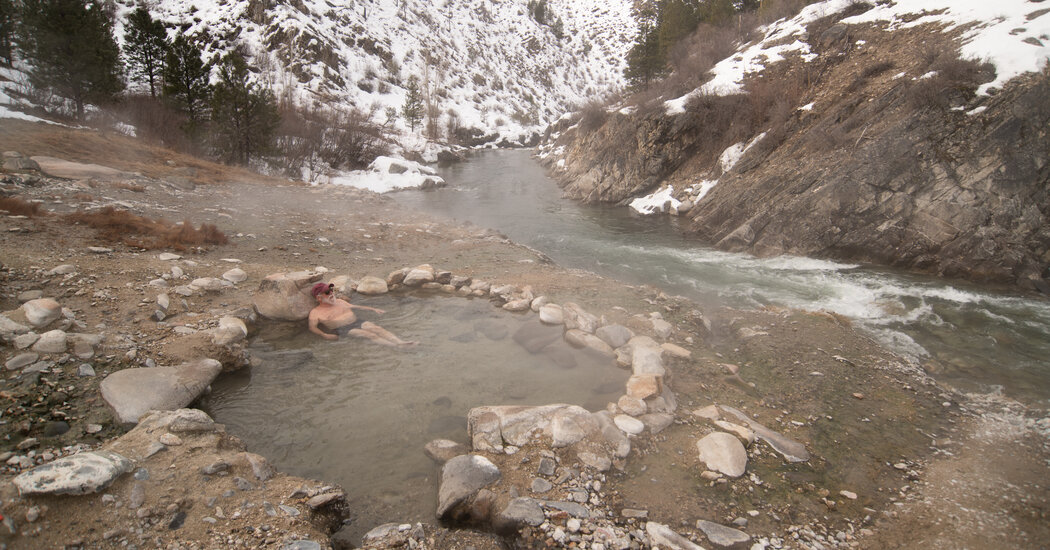50 States, 50 Fixes
Nearly 500 buildings in the state capital get their heat from a clean, renewable source located deep in the ground.
It’s pretty easy to get into hot water in Boise. After all, it’s in Idaho, a state filled with hundreds of hot springs.
The city has tapped into that naturally hot water to create the largest municipally run geothermal system in the country.
Nearly 500 Boise businesses, government buildings and homes — as well as hospital and university buildings, City Hall and a Y.M.C.A. — are warmed by heat drawn directly from hot water reservoirs, or aquifers, below ground. The Idaho Statehouse, in Boise, is the only one in the United States to use geothermal heat. The heat even warms some sidewalks in the winter, to melt the snow, and raises the temperature in hot tubs.
50 States, 50 Fixes is a series about local solutions to environmental problems. More to come this year.
Renewable, reliable and relatively free of pollution, geothermal heating is possible in Boise because of fault lines that expose groundwater to hot rocks, heating water to around 170 degrees Fahrenheit, or about 77 degrees Celsius. The water is drawn from wells in nearby foothills into a closed-loop network of pipes that reach into buildings, before going back to the aquifer to be heated again.
In each building, the geothermal heat is transferred to water in separate adjoining pipes, which distribute the heat throughout the building.
“We pump the water up, we borrow the heat for buildings, and then we put it right back in the aquifer again,” said Tina Riley, Boise’s geothermal development coordinator.
The number of buildings the city of Boise heats this way has grown more than sixfold in the last 40 years, with more growth on the way. One result of the expansion is cleaner air. In 2024, city officials calculated that geothermal heat had resulted in 6,500 fewer metric tons of carbon dioxide emissions annually, the equivalent of removing 1,500 cars from the road each year.
“There is a lot of demand for clean, affordable, local energy,” Ms. Riley said. “There’s a degree of energy independence that comes with this as well.”
Boiseans began using this natural resource to heat buildings in the 1890s, after drilling wells into aquifers that yielded hundreds of thousands of gallons of piping hot water a day. The water heated pools and baths at the local swimming pool, a Victorian mansion belonging to the head of the water company and, eventually, hundreds of homes in an area that was christened the Boise Warm Springs Water District.
Things might’ve ended there were it not for the oil crisis in the 1970s, which prompted officials to seek a more affordable form of energy.
“At that point in time, the Boise Warm Springs District had been thriving for almost 100 years,” Ms. Riley said. “So that’s what we looked at to then say, ‘Let’s do the same thing.’”
Today, there are four separately run geothermal water systems in Boise: one run by the city, another by the Boise Warm Springs District and two more that serve the Capitol and U.S. Department of Veterans Affairs buildings.
The city’s system is operated as a utility, funded by the sale of water rather than by taxpayers. Ms. Riley said the price of the heat was roughly comparable to that of natural gas, depending on the efficiency of buildings, but cost less when used in tandem with heat pumps.
Over in the Boise Warm Springs Water District, Scott Lewis, a technician, said that geothermal heat was especially cost-effective for warming old Victorian homes that hadn’t been weatherized.
It all amounts to less stress on the power grid because it uses minimal electricity, he said. It costs the district $1,800 a month to power the water pumps that provide heat to more than one million square feet of space. Expansion of the geothermal networks has been limited by what the aquifer can provide, but Mr. Lewis said the district was looking to add another 30 homes to the network to help meet demand.
“It is actually very desired, especially around this area,” he said. “We find a lot of people are really environmentally conscious around here.”
The heating system has even made Boise a destination, drawing visitors from Iceland, Croatia and Australia.
“We’ve had people from all over the world,” Mr. Lewis said. “We love just letting everybody know about our little geothermal system that we have here.”


